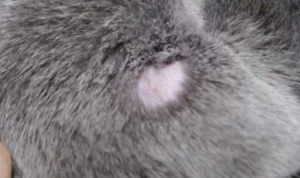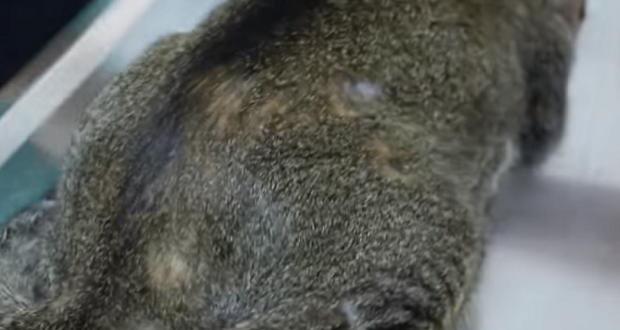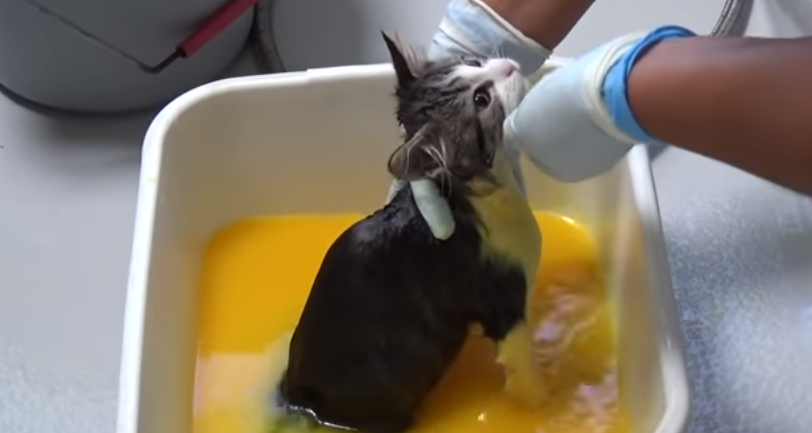 Cats are pets that are prone to ringworms. Human beings may also be at risk to get these worms if you don’t treat them. Cat owners require ‘particular understanding of the disease and suitable treatment.
Cats are pets that are prone to ringworms. Human beings may also be at risk to get these worms if you don’t treat them. Cat owners require ‘particular understanding of the disease and suitable treatment.
If you don’t treat your cat, you will subject it to other infectious conditions that may deteriorate its health.
Additionally, keeping the cat healthy makes it to be playful and fun to you. The following are facts about ringworms that you need to know.
Ringworm: What is a Ringworm?
This is a contagious fungal skin disease that affects pets. Dermatophytes present in the environment infect the cat developing into a full-blown infection. The dermatophytes also cause other skin diseases, including athlete’s foot, joke itch, among others.
Diagnosing Ringworm in Cats
Coming up with a diagnosis of ringworms in cats is challenging. The disease has no specific symptoms. However, some general symptoms include:

- Hair loss
- Itchy skin
- Crusty or flaky skin
- A hairless scaly rings that appear red in the cat’s skin. They can manifest behind the ears, on the front or back paws, and anywhere on the head.
The symptoms can also indicate other underlying medical conditions that subject the cat to poor health. Visiting a vet is the only way to ascertain the state of the cat’s skin and deduce if it is ringworm infection.

Ringworms in pets transfer in the following ways:
- Having a new member cat added to the existing cats
- Weak immunity of the cats, especially amongst old and young kitty.
- Ringworm infection in other home pets or animals
- People in the home are sick and diagnosed with ringworms
Diagnosing Ringworm
Only a vet can make the distinction between ringworm and other skin diseases. A professional veterinary will carry out a number of diagnostic tests to test if your cat has ringworms. Some of the tests that the cat will undertake include:

Wood lamp test
Wood lamp is a light test. The sun shines on the cat’s fur. If the fungus is present, it glows in yellow-green allowing its easy detection. However, this is not always the case, and it might be entirely inaccurate. Other elements on the skin might start to glow, including dead cells, any ointment applied on the cat, and hair fibers, among others.

Culture test
Culture test process is straightforward. Vets pick several hairs surrounding the infected areas or comb through the fur. The place the sample collected in a jar with a gel that promotes the growth of any fungi. Any development or a fungi colony requires further investigation.

Ringworm Treatment
Appropriate treatment procedure depends on the severity of the symptoms. Mild cases require a simple ointment or topical application for treatment. Severe cases are hard to treat and thus require rough treatment. Suitable treatment for ringworm is vital to ensure that the ringworm does not manifest again. The available treatment options include:
Lime and Sulfur combination
The vet may advise you to dip your cat in a solution composed of lime and sulfur. Repeat the process for four days or three. Ensure that the cat’s skin and fur are dry. Dip the cat into the solution and allow it to flow. Do not rinse the solution from the coat. Remember that this combination can stain different surfaces.

Shampoo
Unless given directions by the veterinarian, follow instructions as indicated on the product label. Most probable directions are to bathe the cat twice in a single week to relive from the ringworms. The shampoo conditions should be followed carefully to prevent any side effects from attacking the cat’s skin.

Lufenuron (oral)
This medication is quite popular with flea treatment. It might also work for ringworms. However, it’s used in combination with other medical therapies to make it function better. Lufenuron is effective in having your results within a short time. It also soothes the cat’s skin.
Shave the cat’s fur
Using an electrical clipper to shave your cat’s fur is a simple means to end ringworms manifested in your cat. This is one of the easy and cheap treatments. It offers better access to the skin for medical therapies to work. The method removes any fungal spores that contaminate the environment after the shave.
Frequency in ringworm treatment
 Cat owners should frequently take cats to vets for scans and diagnosis to check if their cats have ringworms. If the cat’s fur is shaved then, a cat has to last several months under treatment until the hair begins to grow back. Otherwise, until no more ringworm appears on the vet’s diagnosis kits; keep checking with the vet frequently.
Cat owners should frequently take cats to vets for scans and diagnosis to check if their cats have ringworms. If the cat’s fur is shaved then, a cat has to last several months under treatment until the hair begins to grow back. Otherwise, until no more ringworm appears on the vet’s diagnosis kits; keep checking with the vet frequently.
Decontaminate the environment
Every spore the cats shed when sick is a potential contaminant. Other animals in the house and you, as the owner, stand a risk of getting a ringworm infection. It is not easy to identify contaminated surfaces. Since these surfaces may be the main agents of transmission you need to carefully treat the surface. Therefore, use disinfectants to disinfect your home regularly. Prevent reinfections from occurring once the healing process is complete for the cat.
Prevention
It is good to prevent ringworms from your pets. You can minimize the spread of ringworms with continuous disinfection. Disinfect any contaminated surface including rugs, blankets, clothes, towels, among others. Bleach is an effective disinfectant and works fast and its easily accessible. Hydrogen peroxide wipes will also do the trick.
You may contact a physician if you notice abnormal conditions of your skin together with your siblings’ skin. When ringworms are detected early in human skin, it is easy to treat fully and have healthy skin within a short time. Therefore, the treatment of ringworms requires proper monitoring and strict adherence to medical requirements.



This is a serious contagious disease. Be careful before treating the cat yourself. You can suffer yourself.